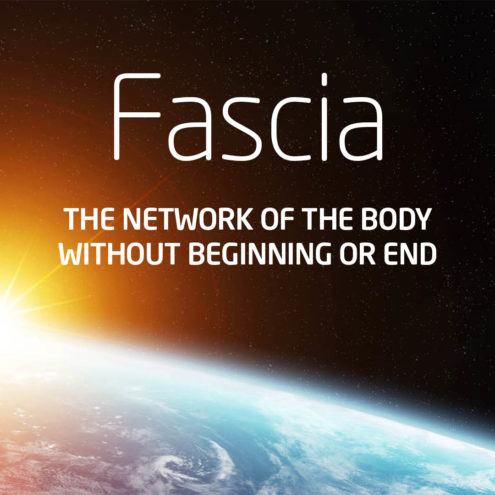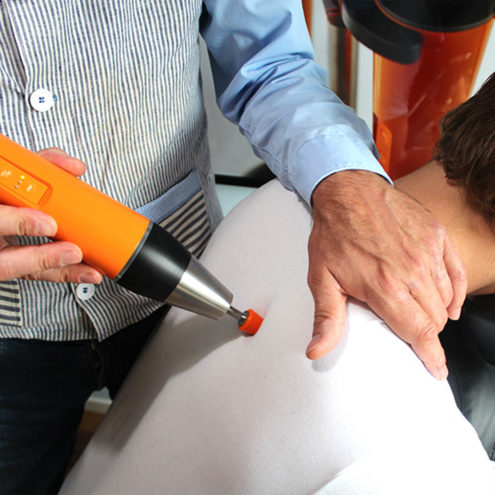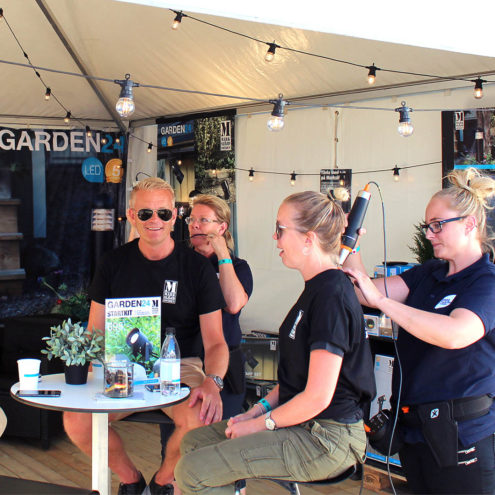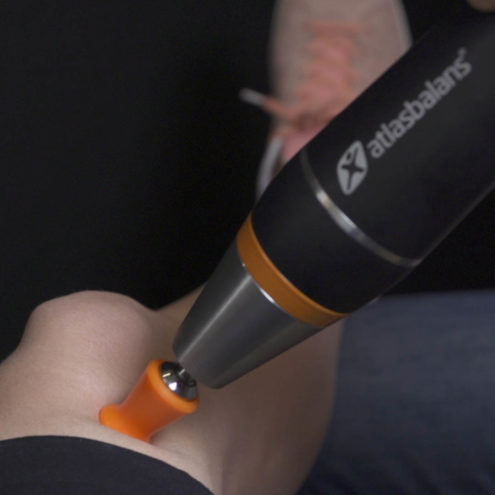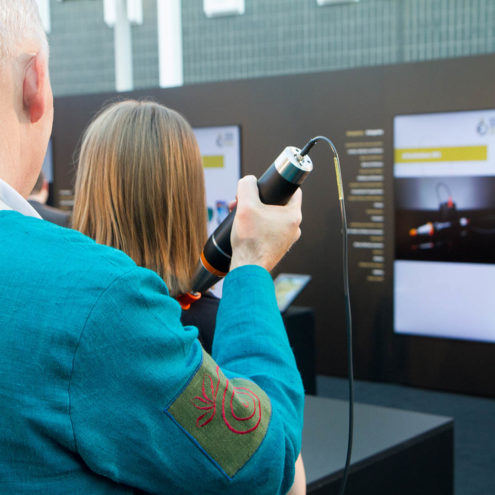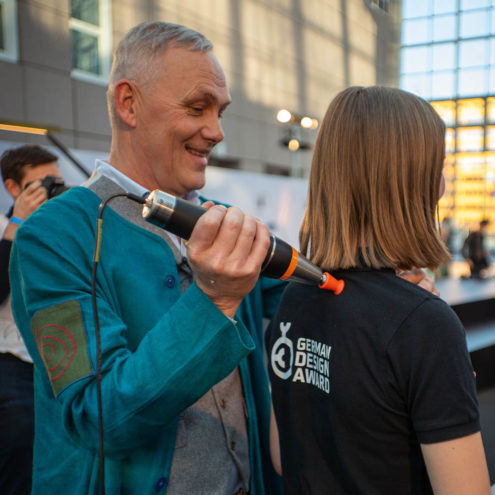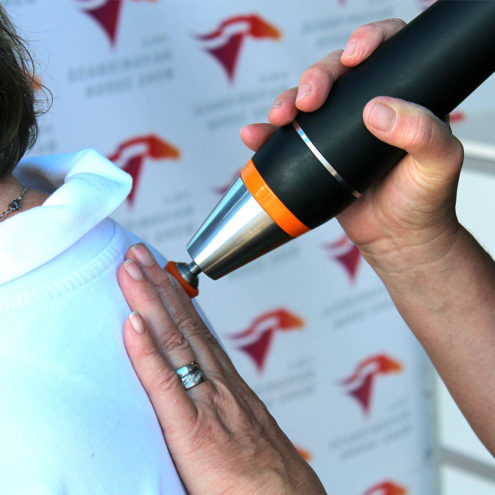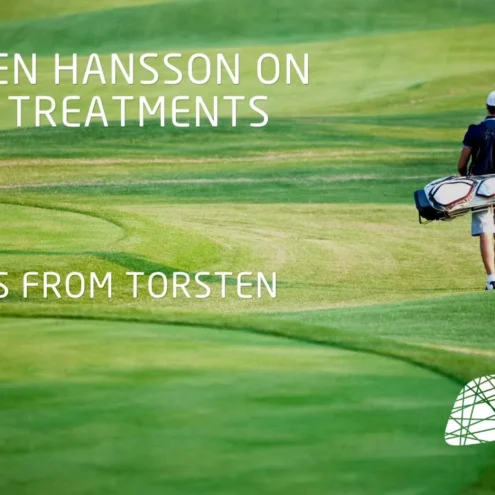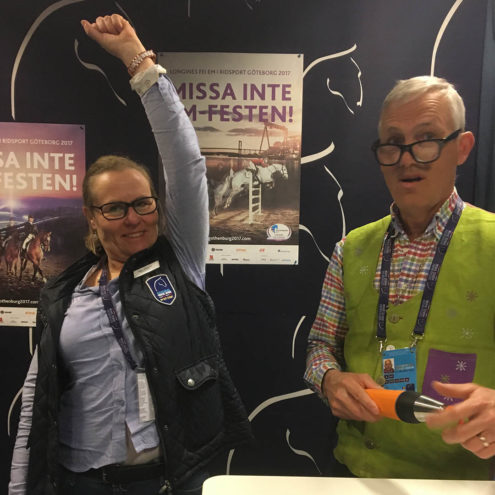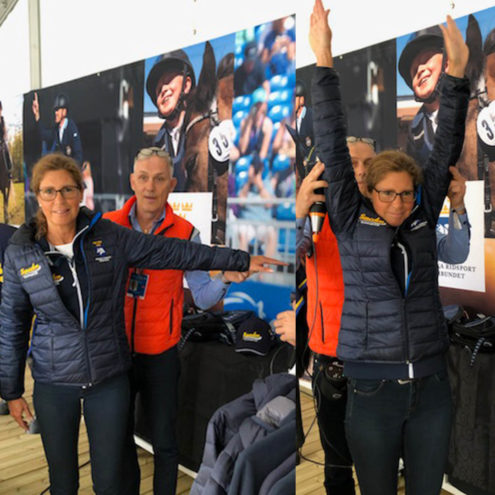Common injuries in padel – Prevention and Treatment
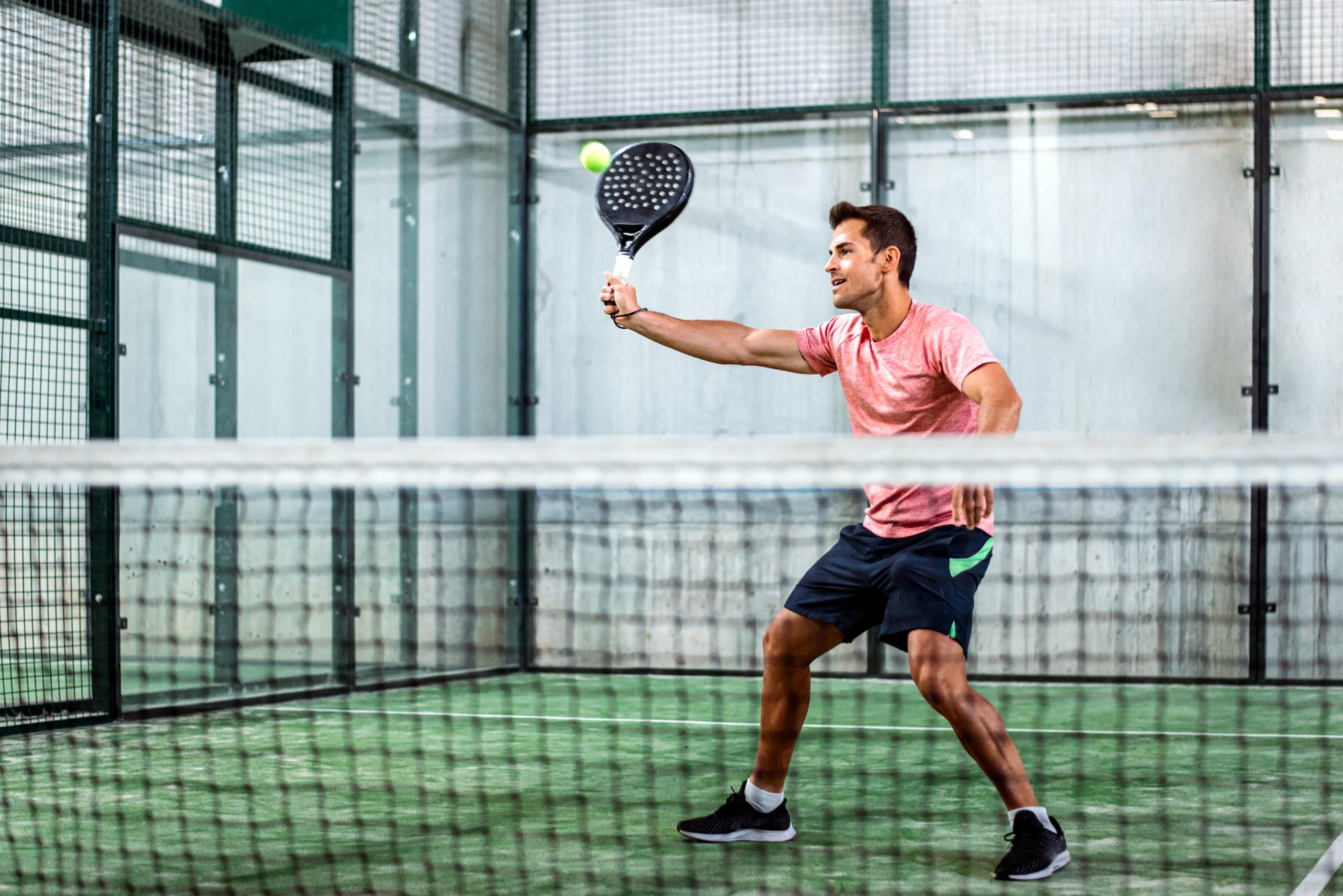
Padel is a sport that has risen incredibly in popularity in Sweden in recent years. Padel is a racket sport that combines elements of both tennis and squash, characterized by its smaller court size and the use of solid walls around the playing area. The compact court in padel leads to shorter, less demanding movements compared to tennis. The reduced dimensions of the court mean less ground to cover, resulting in less strain on the musculoskeletal system. A padel racket is also lighter and smaller than a tennis racket, reducing the risk of shoulder and arm injuries. Although padel is not as physically demanding as tennis, there is a risk of sustaining injuries. In the case of padel, it has been shown that a greater proportion of amateur players have poorer physical and technical fitness compared to tennis players, which would lead to injury.
In order to prevent and rehabilitate injuries related to paddle sports, it is important to understand how the body and fascia mechanically adapt and rebuild to meet the physical demands of the sport. It is also important to introduce early methods of training and recovery that allow injured and weak muscles to be strengthened and fitness improved, but also that the fascial network can be rebuilt and strengthened multidimensionally. The fascia is the tissue outside the cells, the cellular matrix. This network is found everywhere in our body and connects all body parts and systems to each other.
Common injuries that padel players can suffer from are tennis elbow, rotator cuff muscle tears, rotator cuff tendon injuries, lumbar injuries such as back strains, wrist injuries, knee injuries and ankle sprains.
Common types of injuries in padel
Tennis elbow/paddle elbow: Caused by overuse of the forearm extensor muscles, which attach to the outside of the elbow. The repetitive work of the forearm causes the tendon to become overstretched and suffer small lesions that can become inflamed.
Shoulder injuries: Weaknesses in the rotator cuff muscles in conjunction with its thin epimysial fascia mean that it can be easily ruptured by tennis. Weak and fatigued rotator cuff muscles can also cause tendons to be damaged and, in the worst cases, torn.
Knee problems: Sudden sprints and quick turns can adversely affect the knee joint. Structures often affected are the anterior cruciate ligament (ACL), the medial collateral ligament (MCL), the internal meniscus and the patellar tendon.
Wrist injuries: Poor hitting technique and poorly fitting rackets wear down wrist structures. Common wrist injuries include carpal tunnel syndrome, tendonitis and wrist sprains.
Lumbar injuries: Injuries to the lumbar spine are common in amateur players. Paddling involves moving your back in all directions. If you have a job that requires you to sit for most of the day, the muscles in your lower back are inactive for long periods of time, causing them to become stiff and weak. Weak and stiff muscles are more likely to be overworked and injured during explosive dynamic work.
Ankle sprains: Rapid turns in paddle tennis cause the ligaments on the outside of the ankle to stretch. Poor foot placement can lead to severe ankle sprains where the ligaments overstretch or break.
Padel elbow and tennis elbow
Also known as lateral epicondylitis. Padel elbow is the same injury as tennis elbow, but is instead caused by paddle play. A padel elbow involves the tendon from the forearm muscles attaching to the outside of the elbow becoming inflamed. Most often, overuse of the forearm extensor muscles is what causes the symptoms. The repetitive work from the forearm causes the tendon to overstretch and get small lesions that can become inflamed. Falls on the arm can also cause padel elbow.
Symptoms: Pain, swelling and warmth on the outside of the elbow that may spread up or down the arm. With use, the pain increases, especially when gripping something and twisting the arm at the same time. It may also hurt when trying to extend the elbow.
Shoulder injuries
With the shoulder joint’s large range of motion with only one ligament and its repetitive use during tennis play, much is required of the surrounding muscles and tendons of the rotator cuff. Many paddle players often have upper body weaknesses, which are compensated for by taking out more power in the shoulders. Weaknesses in the rotator cuff muscles, coupled with the fact that it is made up of thin fascia, can make it prone to tears during play. Weak and fatigued rotator cuff muscles can also cause tendons to be exposed to injury and, in the worst case, torn. The more fatigued a muscle and tendon are, the more easily they can be injured.
Symptoms: Pain when moving the shoulder joint. Especially when moving the arm in front of the body, above the head or to the side. A feeling of weakness in the shoulder is also common. It may also hurt to lie on the injured shoulder. In tendon rupture, a popping sound may be heard at the time of injury. Bruising may also occur on the injured area.
Knee problems
Padel requires sudden fast sprints and also quick turns. Structures often affected are the anterior cruciate ligament (ACL), the medial collateral ligament (MCL), the medial meniscus and the patellar tendon.
The anterior cruciate ligament (ACL) of the knee joint is the most commonly injured ligament, especially in women. The typical course of an ACL injury is that a hyperextended (fully extended) knee, with the foot fixed to the ground, is subjected to a violent twist. The force causes the knee joint to rotate inwards, taking it outside its normal range of motion. Due to the design of the joint surfaces, inward rotation of the knee can normally only occur in a flexed position. In an extended knee, the femur is locked to the tibia. The mechanism of injury to the menisci and internal collateral ligaments is usually very similar to that in ACL injuries where there is a violent twisting of the knee joint.
Symptoms of ligament and meniscus injuries: Sudden pain and swelling in the knee at the time of injury. You may hear a popping sound or experience a twisting sensation in the knee. It may be difficult to extend the knee. You may experience a sharp pain when squatting or twisting your knee. It is common to experience pain on touch and pain with mechanical symptoms such as locking and popping. There is often a feeling of weakness and bending of the knee.
Wrist injuries
Repetitive strokes with poor technique, where the wrist works more in isolation when hitting hard balls, can cause the surrounding structures to wear and tear. Even a paddle racket with a poor fit in the hand can make the wrist more prone to strain. Problems such as carpal tunnel syndrome, tendonitis on the front or back of the wrist are common. Bad blows and even falls can cause sprains where the ligaments in the wrist are overstretched and damaged.
Symptoms of wrist injuries: Pain, swelling and warmth in the wrist. Difficulty moving the wrist. The pain may go up the arm or into the fingers, affecting the ability to grip. There may be a feeling of weakness in the wrist. Sometimes snapping sounds can be heard. In carpal tunnel syndrome, you may also experience tingling, burning or numbness in your fingers.
Lower back injuries
Often it is amateur padel players who suffer from lower back problems. As padel is a sport that is not as physically demanding as, for example, tennis, it seems to attract people with less physical fitness. If you have an inactive lifestyle with a sedentary job, structures such as fascia and muscles in the lumbar spine will adapt to the lack of physical load and movement. This causes the back to become stiffer and weaker. A back that is stiff and weak, with fascia and muscles that have not had time to adapt to the physical demands of paddle play, is more likely to be overworked and injured.
Ankle sprains
Ankle sprains are one of the most common injuries in padel. Often, ankle sprains occur in connection with quick turns where the ligaments are stretched on the outside of the ankle. Poor foot placement can lead to the ankle being overstretched for a short period of time and being outside the normal range of motion, without the head of the joint moving out of the socket. This causes overstretching of the ligaments, resulting in damage or, in the worst case, rupture.
Symptoms: Pain, swelling and stiffness of the ankle with increased heat. It may be difficult to put weight on the foot. In severe sprains, bruising may occur at the site of injury.
Causes and risk factors of paddle injuries
In amateur players, overexertion is the most common cause of injury. A body that is out of shape, stiff and weak will tire and overwork faster.
Playing at a professional level, optimizing your paddle game means increasing training load and reducing rest periods. This drives a process of physiological adaptations associated with progressive and steady changes in muscles, muscle fascia and tendons.
Whatever the level of play, in addition to mechanical adaptation, a sustained low-grade inflammatory reaction in the fascia will occur. Such micro-inflammations increase collagen synthesis and decrease the viscoelasticity of the fascia. Reduced viscoelasticity makes our body movements stiffer. In paddle games, where the whole body works together, reduced local elasticity can lead to other structures having to work harder and risking overstrain. In an amateur player with an inactive lifestyle, the back and shoulders are often stiff due to fascial adaptation. Poor local elasticity also prevents the body’s ability to absorb forces, which in turn increases the risk of injury to the musculoskeletal system. In paddle tennis, a stiff upper body will impede the cooperation between the upper and lower body, which means that more work by the shoulders and arms is required to achieve a proper stroke. If this is allowed to continue, muscle and tendon structures will be damaged and you may have to give up playing padel.
Lack of warm-up and nutritional deficiencies can also increase the risk of injury for padel players.
Prevention of paddle injuries
There are several methods to prevent various paddle injuries. Many advocate stretching stiff muscles in the shoulders, arms, back and legs.
Another method to prevent overload and injuries in padel, is to use kinesiology tape / elastic tape before training and games to stabilize joints and relieve muscles and tendons.
Proper warm-up such as running at varying intensities increases metabolic activity, increases body temperature and optimizes neuromuscular control improving movement and balance.
Another important method to prepare the body for the stereotypical movements of padel is via dynamic stretches taking into account the myofascia (muscle fascia). Also, performing movement patterns inherent to padel, with progressive increase in complexity and intensity prepares the body. There can be sudden changes of direction, phases of acceleration and deceleration, both with or without a racket.
After a match, the body’s recovery needs to be taken into account. It is important to replenish fluids and energy so that the body gets the right building blocks.
Promoting circulation can optimize one’s physiological and metabolic status. It can be low-intensity aerobic activities that are not tennis-specific, such as cycling where the joints are not exposed to such high levels.
Treatment of common paddle injuries
Treatment methods for paddle injuries are often based on the structure that has been affected such as muscle, ligament, tendon or skeletal bone. Common treatment methods can for simpler injuries include shorter rest periods, light stretching and soft tissue therapy. Sometimes over-the-counter pain medication can be used. For more serious injuries, immobilization via orthoses or casts may be required. Sometimes physiotherapy may be required where the player follows a specially adapted program for the particular injury diagnosed. Physiotherapy allows the player to return to play in the best possible way without the risk of further injury, but also prevents the old injury from recurring. Surgery may also be needed to repair the injury, followed by a longer period of physiotherapy. If the pain is too severe, a doctor may prescribe stronger painkillers.
Rehabilitation and return to padel
An important part of rehabilitation is to consider how the body’s musculoskeletal system adapts to padel and how it has been affected by the player’s lifestyle. Injuries are clinically diagnosed with associated therapies that traditionally focus on muscle, tendon or bone. Rehabilitation and return to play often involves training programs based on progressive loading that is adapted to individual requirements. This can include various forms of eccentric training, core training, dynamic stabilization and muscle activation. Sports science researchers argue that rehabilitation needs to be optimized as high-impact training is required to optimize sports performance.Although there is little data on how the fascia affects return to activity, a treatment is proposed that focuses on providing specific stimuli to the connective tissue that could speed up recovery.
One suggestion is to use manual techniques in rehabilitation to stimulate the muscle to return from a high tension position to a lower one. In the case of injuries, it is also important to consider the effect of arthrofibrosis (excessive scar tissue) if you choose to immobilize and protect the injury.
How our specialist team at Fascia Clinics can help you
At Fasciaklinikerna, we take a holistic approach to treating paddle injuries. Our team of therapists uses fascia therapy, a highly effective wellness treatment. The fascia is the network of connective tissue that binds and permeates everything in our body. All cells, tissues (even bone tissue), muscles and organs contain fascia.
Fascia treatment focuses on releasing tension and adhesions in the fascia and increasing its flow. In this way, we can balance the body to reduce pain, improve strength and increase mobility. Reducing pressure and increasing flow in the fascia also helps cell membranes to absorb nutrients and release waste products. The treatment provides a pleasant relaxation and does not hurt. Increased circulation with a more even load can promote the body’s own healing. A more even load also means that the body’s structures are not subjected to excessive wear and tear, reducing the risk of further injury.
During a visit, we analyze the whole body to see where compensations and imbalances are and how they have spread. If there is an imbalance in the body, there is a risk that it will spread and affect other structures such as muscles and joints. That’s why it’s very important to seek help quickly as soon as you notice any symptoms.
By combining traditional medical treatment with fascial therapy, we aim to optimize your recovery and minimize the risk of sustaining further injuries. Visit our website for more information and book a consultation today!
 Search
Search






